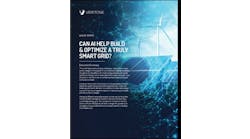New York’s $1 billion Green Bank is expected to give energy efficiency a big boost by using public funds to leverage private investment. But another, more obscure program could have an even greater impact. It is the state’s recently launched residential bond initiative.
Francis Murray, former head of the New York State Energy Research and Development Authority, described the bond program at the Alliance to Save Energy’s 11th Great Energy Efficiency Day (GEED), held in Washington, D.C. on Nov. 20.
“It’s more modest in scale (than the Green Bank) but its potential is even greater,” he told the group of industry and government leaders who gathered to champion ASE’s goal of doubling energy productivity by 2030.
The bond program emerged from out-of-the-box thinking on New York’s part. The state made the argument that energy efficiency helps alleviate water pollution, and convinced the U.S. Environmental Protection Agency that efficiency qualifies for financing under the EPA’s Clean Water State Revolving Fund. This allowed NYSERDA to take advantage of the strong credit rating of the New York State’s Environmental Facilities Corporation, a bond authority that finances environmental projects.
As a result, NYSERDA successfully raised $24.3 million through the water/efficiency bond issue for residential energy efficiency. The program offers loans at interest rates as low 0.02 percent, according to Murray.
Other states are expected to copy the model, opening the way for low-cost energy efficiency loans nationally. (For more details see EnergyEfficiencyMarkets.com August 10 article “Should We Finance Energy Efficiency as We Do Roads and Bridges?”
The GEED event also highlighted other energy efficiency success stories from state and local officials nationwide and from such companies as Schneider Electric, Ingersoll Rand, Pacific Gas & Electric, Los Angeles Department of Water and Power and Grundfos.
One story which may or may not be a success this year – we’ll know soon – is the Energy Savings & Industrial Competitiveness Act of 2013, aka the Shaheen-Portman bill. The bipartisan bill, which supporters thought stood a good chance of passage earlier this year, stalled in the Senate in September after being barraged with amendments.
However, Senators Jeanne Shaheen (D-NH) and Rob Portman (R-OH), the bill’s key sponsors, both expressed confidence at GEED that the bill may still pass this year – although the clock is ticking.
The bill improves building codes, creates worker training programs, boosts various industrial efficiency efforts, requires the federal government improve its energy saving efforts, promotes building benchmarking, offers programs to overcome the tenant/landlord split incentive problem, pushes school retrofits, and offers efficiency grants for non-profits.
What do you think New York’s new program will mean to residential energy efficiency? Join the conversation on our LinkedIn group.





